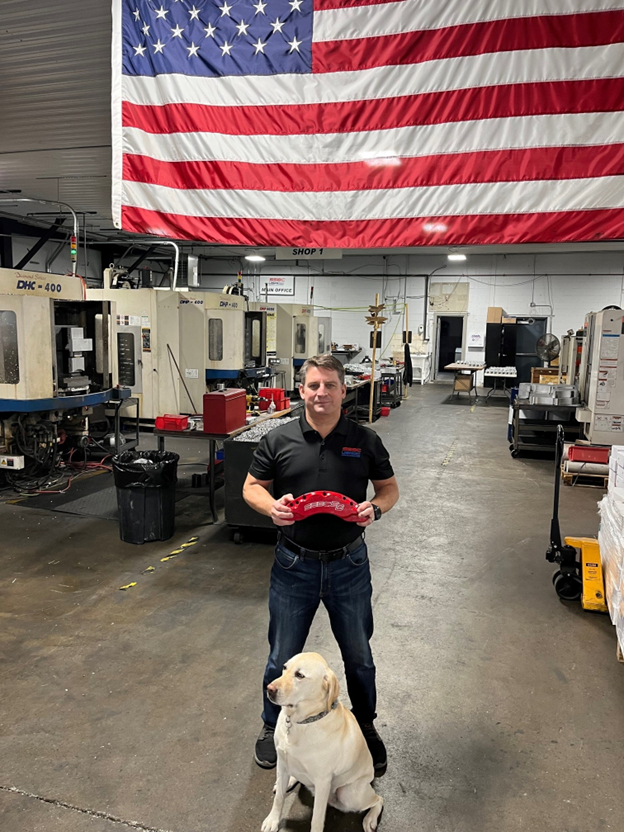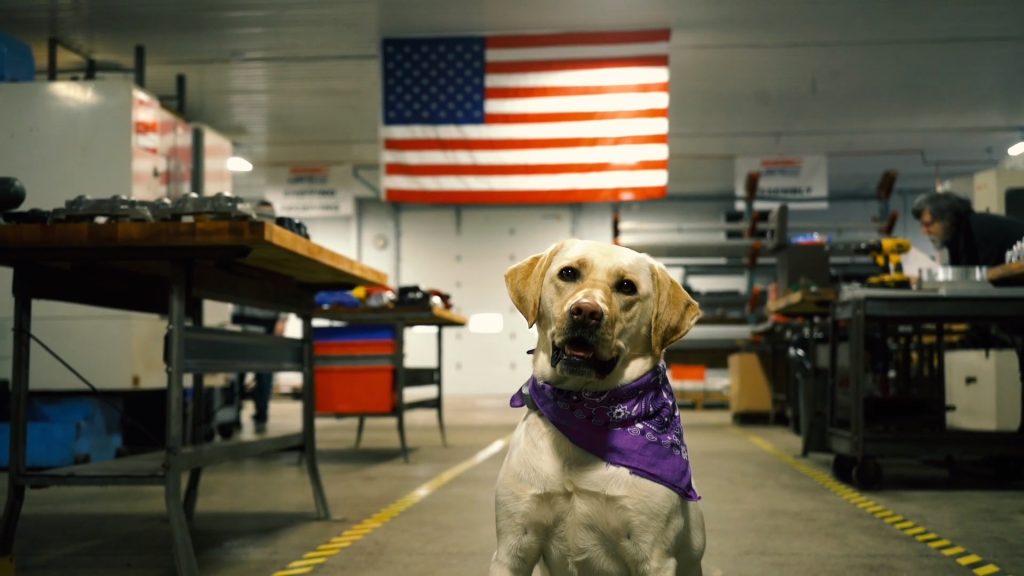While it’s easy to get excited about jaw dropping acceleration and massive towing power, let’s make one point clear:
Stopping is just as important as going.
To that end, we wanted to talk with a brake expert about everything from basic brake tech all the way to disc brake conversions for classic cars and towing upgrades for late model trucks. And we found the perfect guy for the job in Tom Reid. Not only is he president and CEO of a top-tier performance brake company, SSBC-USA, Tom’s also an engineer who grew up working with his uncle’s grassroots race team.
So yeah, he knows a thing or two about bringing fast vehicles down to a safe, controlled stop.
If you’re mulling over a brake upgrade or just don’t feel there’s enough “Whoa Nelly” under your right foot, then it’s worth checking out our full interview with Tom in the OnAllCylinders podcast section. But you can also read 10 short excerpts from the discussion below.

***
10 Brake Tech Questions with Tom Reid from SSBC-USA
***
1. What Are the Most Common Topics You Hear on Your Tech Line?
“Brakes seem to be the last thing folks think about, so most of the questions we get are panicked questions: ‘I just installed big tires and a lift kit, and now I can’t stop my truck—what do I do?’ (Laughs)
“It’s not really as much about the nuts-and-bolts of a brake kit. People almost treat it like a black box. They just know what they want to do—stop their vehicle better.
“And a lot of times, there’s a premium on what it looks like. Brakes have become an accessory for a lot of people spending big money on a restomod or show truck, and they’ve got those big wheels that open it up. People want custom colors—the aesthetic aspect now, is almost as important as the performance upgrade.”
2. What’s Often Overlooked About a Brake System?
“Let’s go back to an OEM brake. Manufacturers are designing that brake system to work for a huge bell curve of people—everyone from a teenager who’s heavy on the brake pedal to someone who’s going 35 mph in the left lane. That brake system has to cover all of those people.
“And it usually does a very nice job of that, at first. But the system is going to degrade from that point forward. So it was already kind of a stretch for some of these specialty applications. And once you get outside of that bell curve, the system’s not going to suit your needs.
“Sometimes [when brakes are under-performing] it’s DIY’ers not doing a proper brake upgrade, some of the times it’s, if you’re taking an OEM brake system and replacing it with OEM parts, you’re not necessarily upgrading at all.
“So there are going to be issues until you upgrade.”
3. When You Replace Brake Pads, Should You Replace the Rotor Too?
“We absolutely recommend that you never replace pads without replacing the rotor too. Even if you’ve still got some life left in your rotor.
“That old pad and rotor have been bedded, they have been mated. Their flaws are now matched and interlocked.
“Even if you’ve got an upgraded pad, if you go and put that on an old rotor that’s been bedded to another pad, it’s not going to have the same surface area, it’s not going to have the same characteristics.
“And it’s not going to break-in properly—that’s the big thing. It all has to be done as a set, a system, and it all has to work together. And they often have to be broken-in at the same time.
4. What Symptoms Predict That a Brake Upgrade is Necessary?
“When you start doing anything to these vehicles, the first thing you should look for is ‘Has the system changed? Did the pedal get softer?’ Is it making weird noises?’
“You can look at the pads and see if there’s excessive wear. We look for uneven wear, we look for gouges in the rotor—most wheel wells you can stick your head in and get a decent idea of what’s going on.
“Obviously there’s catastrophic failure. Brake fluid on the ground is never, ever a good sign.
“So there are a lot of little indicators, but the ultimate red flag is the vehicle’s not stopping as fast as you need it to stop anymore. That’s the one true indicator that something’s amiss.
5. Is There a Specific Recipe or Brake Upgrade Progression That You Recommend?
“First, we determine two things: What the application will be, and second, how much you want to spend.
“You can do a cheap upgrade, you can get better pads and rotors. Those will make your existing system better, no matter what. But will it make it good enough?
“Take trucks for example. Guys are adding big wheels, 300 pound bumpers, a lift kit—you don’t have to be an expert to know that’s changed the physics of the vehicle.
“Your OEM brakes were sized for a completely different wheel and center of gravity. You hit the brakes on a lifted, 9,000 pound truck, instead of 75 percent of the weight shifting to the front, now 90 percent is going to the front. So that brake has got to do a lot more stopping.”
6. Should Truck Owners That Haul & Tow Consider a Brake Upgrade?
“We get a lot of folks that are pulling trailers, or have a daily work truck, so we recommend a caliper upgrade. It involves changing the physics of the system, because you can’t just take a stock OEM caliper and tweak it to perform better.
“You need a better braking system at the wheel. To us, that would involve larger, fixed calipers, better pads, and for us, we go with an OEM diameter rotor, for the whole reason that it’ll still fit in that OEM wheel.
“But it adds stopping force. We call that our B8 Barbarian kit.
7. What’s the Difference Between a Sliding & Fixed Caliper? Which is Better?
“On a sliding caliper, you have a cradle bracket that holds the pads, and you push on one side of that rotor. That’s the standard caliper that’s on almost every major vehicle, at least up front. Some still have drums on the back.
“Sliding calipers have a lot of travel and flex in them. So you’re not getting the maximum force between the caliper and the rotor, because you’ve got too much deflection. Too much travel and too much flex.
“In a fixed caliper, the only things that move are the pistons. But you’ve got a lot more caliper on the inside and the outside of that rotor.
“We also have to fight the urge to fit the biggest caliper we can, because there are other system parameters. Instead of two 64mm pistons we add six 64mm pistons, you just wouldn’t have enough booster, you wouldn’t have enough master cylinder.
“So we optimize the system by adding as much piston area as we can, which translates to force, and then we get the biggest pad that will fit on that rotor.
“That’s the best way to get greater stopping force. But again, it’s got to fit into the wheel.”
8. Does a Caliper Upgrade Swap Work with an Anti-Lock Brake System (ABS)?
“An upgrade, if done right, will work better with ABS than without. We do a ton of before/after testing, and we can see the difference in performance even in a really slippery situation.
“You’re really talking about two relationships here: the relationship between the tire and the road, and the relationship between the caliper and rotor.
“ABS is looking to pulse to stop. So if you’ve got the OEM sliding caliper, that piston has to travel twice as far—it not only has to push the inside pad against the rotor, it’s got to pull the cradle bracket in from the other side.
“And that all takes time. It doesn’t sound like a lot, but you’re talking about pulsing anywhere from 10 to 18 times a second with ABS.
“In a fixed caliper, you’ve got pistons on either side, so they travel half as far. So they will pulse faster, giving control back to the relationship between the tire and the pavement.”
9. Should You Address the Brakes on a Modified, Upgraded Classic Car or Truck?
“You’re going to be going a lot faster, who are you kidding. (Laughs) But you’ve got to assess where you are. Do you want to keep anything original, like the booster and master cylinder?
“We check to see what master cylinder and booster you’re going to use. Then we’ve got to make sure there are no changes to the knuckles or anything else. And will your wheels receive a larger caliper?
“So we have to work with the builder to see if will all work together.”
10. Do You Recommend Swapping Brake Drums for Discs on an Older Car or Truck?
“Is it better to upgrade from drums to discs? Yes, it is. Every time. The vehicle will stop better.
“But if you’ve got a classic car that’s only driven to weekend shows, a disc conversion is not always a good investment. If you’ll like the feel of your brakes and it’s working for you, that’s fine.
“The minute you expect better performance, cornering, you change suspension parts or go with bigger wheels, then that OE drum is probably not going to be sufficient. Especially in the front.”
***
Tom wanted to give a special shout out to his pal Griff Jordan from PowerStop brakes for helping him prepare for this conversation.
***
You can hear more from this interview in the OnAllCylinders Podcasts section.
And if you’ve got specific questions on your brake setup, Tom and his team of brake experts are ready to help. You can reach them via the Contact Us page at SSBC-USA.com to begin the conversation.
Heck, they may even let you talk to Bella.


The only item you did not address was this, as far as I know, you can always turn the rotors at least once, if the grooving is minor, would this now create a new surface in order to bed in a better pad to the rotor?